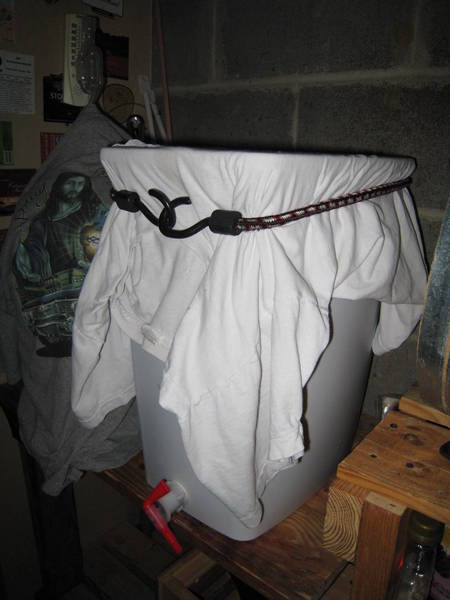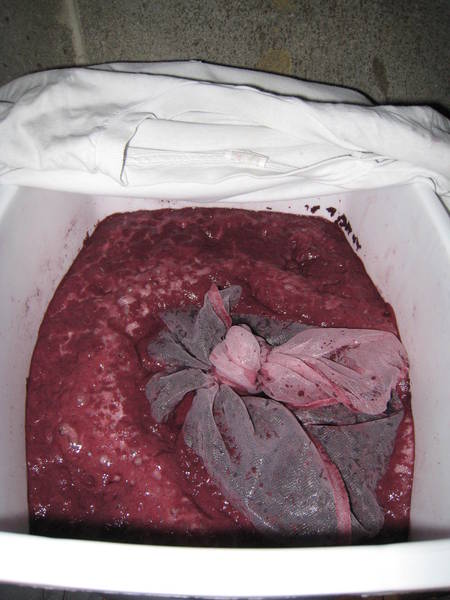summersolstice
Well-Known Member
I mentioned this on another thread and thought I'd post a photo since I just started a new wine day before yesterday. This is a 7-8 gallon plastic trash pail like they sell at any discount store. I think I paid $10 for it and I've been using it for three years. I drilled a 1" hole and added a spigot. The shape is convenient and you can't beat the price. The second photo shows active fermentation in a 16L wine kit and a straining bag floating on top (I punch the bag down twice a day).






